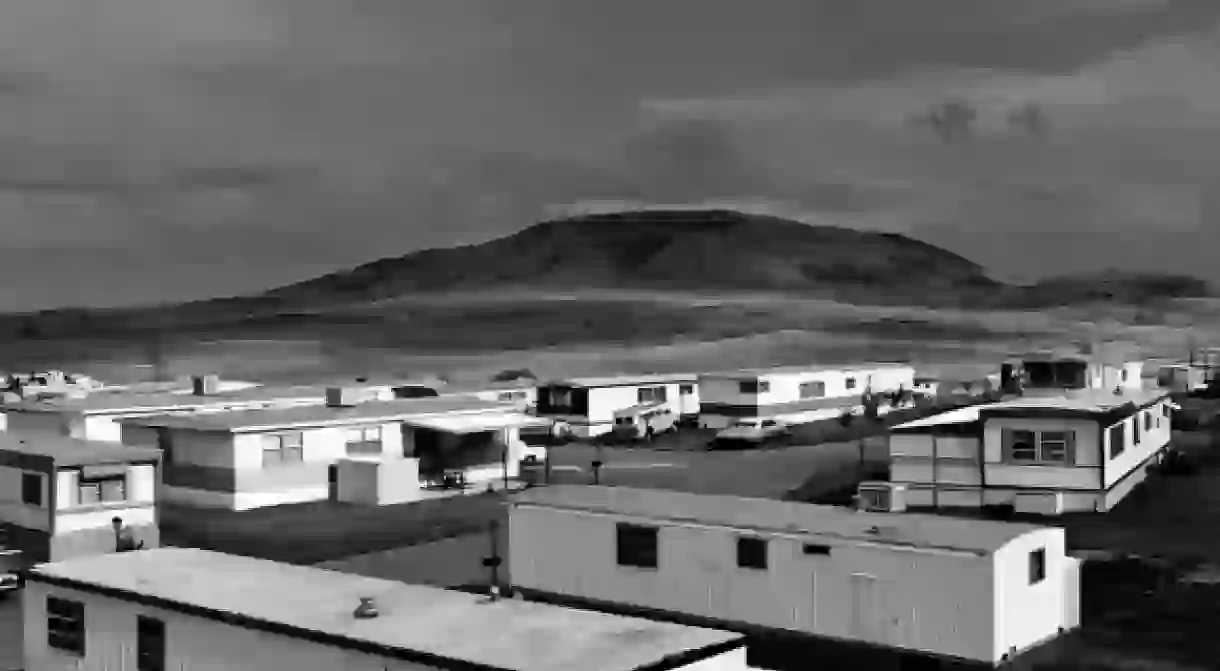Robert Adams: Finding Beauty in the Mundane

Photographer Robert Adams celebrates with gusto the American western states. His breathtaking landscape pictures, capturing banal yet ravishing scenes of nature and man-altered environments, subtly address environmental issues, writes Michèle Kieffer.

Robert Adams has the gift to see beauty in ugliness, more precisely the gift to reveal that both components belong together. His black and white photographs of the American West do not celebrate the sublime elegance of nature in its purest, untouched state, but show a man-altered landscape. Adams’ work focuses primarily on California, Oregon, and his home state of Colorado, showing the changes and alterations nature and civilisation have gone through.
Born in 1937 in Orange, New Jersey but raised in the suburbs of Denver, Colorado, Robert Adams only started taking picture in the early 1960s. After earning a Ph.D. in English from the University of Southern California and teaching as an assistant professor, the artist concentrated more and more on photography. He dedicated his career spanning over four decades to the western states, where he grew up and lived for most of his life. This focus is clearly personally motivated, linking the photographer’s private life to his body of work.
Adams was quickly crowned with success after the Museum of Modern Art bought four of his prints in 1969. He subsequently exhibited in major museums and art galleries and was awarded with a Guggenheim Fellowship in 1973 and 1980. Adams was also part of the legendary exhibition New Topographics in 1975, held at the George Eastman House in Rochester New York. The exhibition featured ten photographers – among which were Bernd and Hilla Becher, Lewis Baltz and Stephen Shore – and it marked a new era in landscape photography, celebrating the aesthetics of the banal. Except for Shore who shot in colour, all the artists displayed black-and-white photography of industrial and residential areas shot in a documentary fashion.

Known for its vast wilderness celebrated by photographers such as Ansel Adams, the American West is captured by Robert Adams as a social landscape in which man is part of nature. Adams concentrates on rather mundane subjects, such as housing developments, newly erected suburbs, highways or even commercial strips built on hills and in open spaces. The artist does not shy away from representing men, but only in their surrounding environment. While the photographer is concerned about the damages made to the land and its fragile ecosystem, there is more to his pictures than criticism and social engagement. Through his numerous series, Adams creates a ‘sustaining and challenging mix of beauty, despair, anger and love and, as many critics evoke, hope’ (Peter Brown, One Life – Several Landscapes: An Appreciation of Robert Adams, SPOT, 1996.). He does not separate the natural from the built, but aims to explain the landscape through ‘the perfect fit of all fragments, no matter how imperfect they are’ (Robert Adams, Denver: A Photographic Survey of the Metropolitan Area, 1977).

One of Adams’ most famous pictures is Burning Oil Sludge North of Denver, Colorado(1973). Immobile and silent, hence representative of Adam’s body of work, the powerful picture asks careful attention from the viewer; it needs to be read slowly and intently. The emptiness and calm of the open space stands in contrasts to the dense toxic smoke that arises gracefully in the sky. The unexpected beauty of the dark cloud against the snow-covered Colorado Rockies is awe-inspiring, almost eclipsing the environmental issues around pollution and oil manufacturing.
Even if every single photograph works on its own, the combination of two images gives birth to a third one, according to Robert Adams (Interview for Art: 21, Episode #002, Robert Adams: Books and Gravures, 1999). It doesn’t come as a surprise that the photographer has published over thirty monographs, using the book as a privileged medium of display. Since 2010, the Yale University Art Gallery has been organizing a touring retrospective, Robert Adams: The Place We Live, A Retrospective Selection of Photographs, featuring over three hundred of his prints. Eight prestigious institutions such as the Los Angeles Museum of Art, the Jeu de Paume in Paris and the Fotomuseum Winterthur in Switzerland will host this first major retrospective, paying a memorable tribute to an equally memorable photographer.

Mobile Homes (1973) Yale Art Gallery, V&A, Bill Jay on Photography













